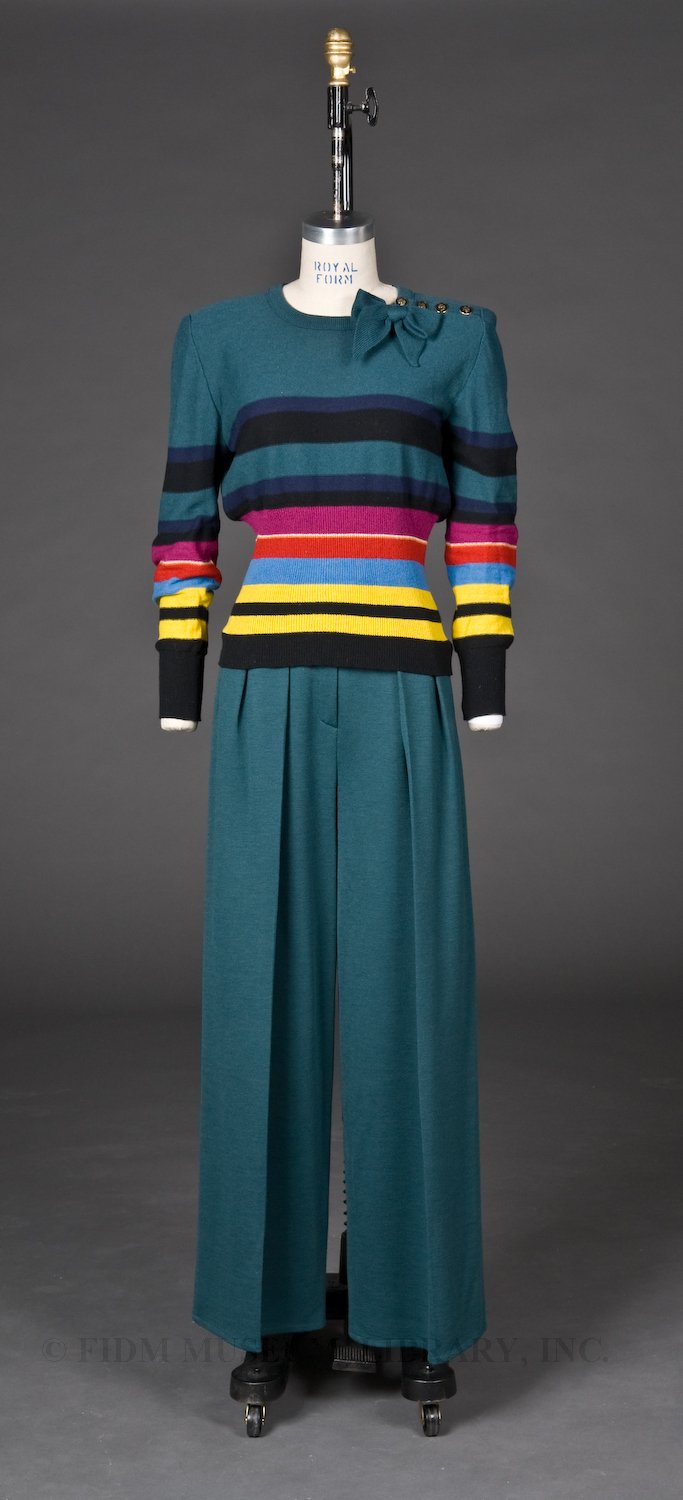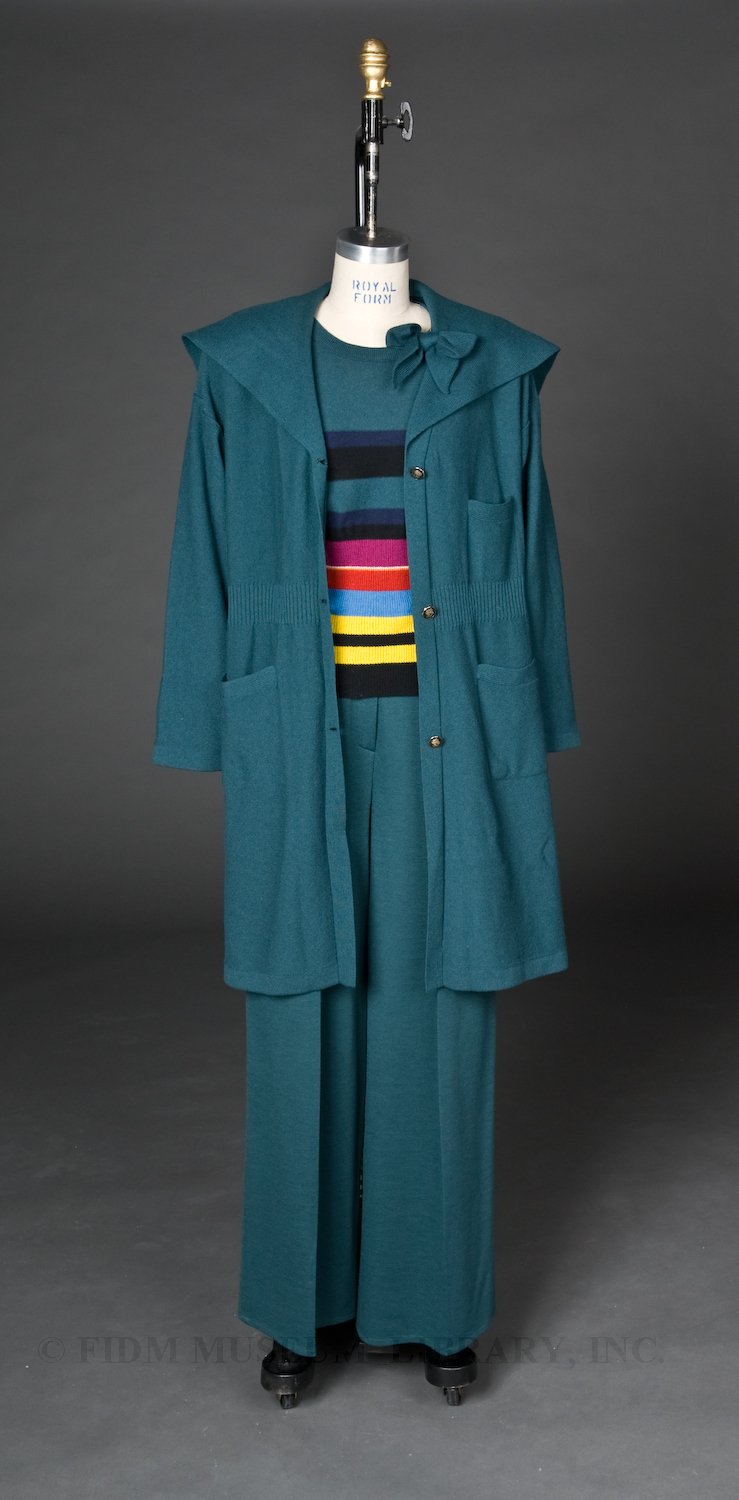Sonia Rykiel’s signature garment is the striped sweater. Her earliest versions were shrunken, body-hugging “poor boy” sweaters with horizontal stripes designed in the early 1960s. The use of soft, knit fabric (often striped) became a trademark, earning Rykiel the title “Queen of Knitwear.” Rykiel intended her knitwear to take shape on the body, so early in her career, she encouraged woman who wore her garments to forgo undergarments. When she opened her eponymous Left Bank boutique in 1968, it quickly became symbolic of the 1960s movement way from haute couture and towards youthful ready-to-wear.
Rykiel’s designs from the 1970s and 80s often suggest silhouettes popular in earlier decades. Drop-waisted dresses similar to those seen in the 1920s were a particular favorite as were wide-legged pants. Though the pant and sweater ensemble below dates from the 1980s, it could have been worn by a daring woman of the 1930s or 1940s, such as Katharine Hepburn.

Wool knit ensemble
Sonia Rykiel
1980-82
Gift of Patricia G. Waldron, M.D.
2002.149.15AB
Rykiel’s interest in un-constricting knit fabrics is based on the
fundamental belief that is possible to be both comfortable and stylish.
This has led to comparisons with Chanel,
who exemplified the same maxim throughout her career. Many of Rykiel’s
garments, such as the pants and sweater ensemble above, are designed
to mix and match with other garments, creating a system of basic
garments that could be worn in a variety of combinations. The brightly
colored sweater above could also be worn with a knit skirt in the same
teal color and either combination could be topped by the loose
coat-sweater seen below.
2002.149.15 with coat-sweater
Rykiel has indicated that she believes only women are capable of creating garments based on the often opposing dictates of comfort and style. In a 1979 interview, she said that “men won’t be wearing the clothes, therefore practical considerations are secondary…women designers define things with a more practical eye because of the limitations of their body. A collar that looks elegant on the drawing board might be difficult to pull over the head. And pants that appear elegant can be constricting.”1 This is a provocative statement, suggesting that male designers ignore comfort for the sake of appearance.
Do male and female designers create fundamentally different garments? Are there examples of male designers who give style and comfort equal weight or examples of female designers who do the opposite?
1 Madsen, Axel. Living for Design: The Yves Saint Laurent Story New York: Delacorte Press, 1979: 134-5.


